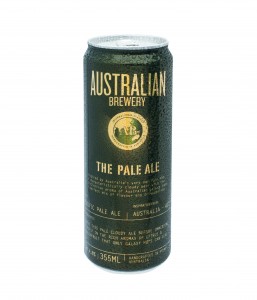This year’s Canberra International Riesling Challenge attracted 487 entries from eight countries – up from 426 entries from six countries in 2012.
Despite increasing entry numbers, the challenge remains largely an Australian event. Our 371 wines comprised 76 per cent of the 2013 total. Second biggest exhibitor, the USA, fielded 35 wines, followed by New Zealand (34), Germany (26), France (17), Czech Republic (2), with one each from Canada and South Africa.
A sweet riesling from German’s Rheingau district topped the awards; a Marlborough, New Zealand, wine beat all the other dry rieslings; and Ravensworth 2013 won the trophy as best Canberra district riesling.
As well as taking out the top award, Germany enjoyed the highest medal strike rate. Twenty-two (85 per cent) of its 26 entries won medals – 11 bronze, four silver and seven gold. New Zealand and France tied for second place, each with a 77 per cent medal strike rate.
Australia’s 371 entries, from more than 35 regions, earned 230 medals. The strike rate of 62 per cent is impressive considering the large number of entries and their geographic diversity.
And the results highlight the continuing dominance of Australia’s traditional riesling heartland – the Clare and Eden Valleys. These two distinct regions lie on South Australia’s Mount Lofty Ranges – Eden Valley in the high country on the Barossa Valley’s east, with Clare a short distance to the north. A third region, High Eden, is a higher, cooler sub-region of the Eden Valley, registered separately in 2001.
Combined, Clare–Eden–High Eden exhibited 166 wines, or 45 per cent of the Australian total. And the three regions raked in 107 medals, 47 per cent of the Australian gongs.
Clare Valley alone entered 104 wines, the greatest number of any region or country, and won 13 gold, 13 silver and 42 bronze medals. The medal strike rate of 65 per cent, significantly below last year’s 73 per cent, underlines the stellar quality of the region’s 2012 vintage. The gold medal tally strengthens this perception – 16 from 90 entries in 2012, versus 13 from 104 entries in 2013.
As a pointer to the future, tiny Tasmania entered the greatest number of wines after Clare and Eden Valleys. The state’s 39 rieslings won 17 bronze, three silver and five gold medals – strike rate of 64 per cent. Like the Clare Valley, Tasmania’s performance in 2013 fell short of its 2012 results – 34 medals from 42 entries, a remarkable strike rate of 81 per cent. Tasmania is on track to be Australia’s capital for riesling as well as chardonnay and pinot noir.
Western Australia’s vast Great Southern zone, fielded 37 wines to win 26 medals (strike rate 70 per cent), comparable to last year’s 38 wines, 28 medals and 73 per cent strike rate. The high strike rate is consistent with the area’s long-established reputation as one of Australia’s leading riesling producers.
The serious underperformance of Canberra rieslings in the competition raises yet again the puzzling issue of inconsistency in wine show judging. A couple of weeks before the riesling challenge, judges at the Canberra and Region Wine Show awarded 21 medals, including six golds, to 26 wines in the 2013 vintage riesling class.
In the catalogue, the judges wrote, “An extraordinary class of glorious Rieslings – a true benchmark nationally and beyond. Purity, delicacy, beautiful fruit to the fore – a regional champion variety. Thank you”.
Fourteen of those 26 wines entered the riesling challenge. They won just six medals (one gold, one silver, four bronze) for a strike rate of 43 per cent. In the regional show, the same 14 wines won three gold, three silver and five bronze medals (strike rate 79 per cent).
Depending on which set of judges we believe, Canberra riesling is either pure, delicate and a national benchmark – or an also ran. The discrepancy is hard to explain. Both sets of judges can’t be right.
With that grain of salt then, we should troll the catalogue of results and always try before we buy.
Copyight © Chris Shanahan 2013
First published 13 November 2013 in the Canberra Times and goodfood.com.au
